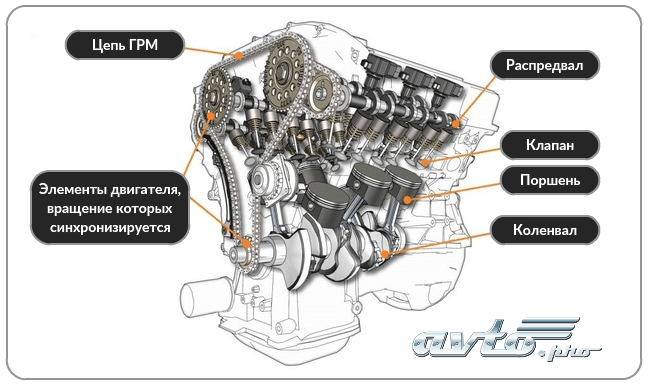
How does a timing chain work?
Your timing chain is absolutely essential to the operation of your vehicle. If it breaks, your car isn't going anywhere and you could damage your engine. So how does a timing chain work, and what happens if it…
Your timing chain is absolutely essential to the operation of your vehicle. If it breaks, your car isn't going anywhere and you could damage your engine. So, how does a timing chain work and what happens if it fails?
Basics
All piston engines have crankshafts and camshafts. The pistons move up and down, and the crankshaft transfers power from them and converts that power into rotational motion. The crankshaft then drives the camshaft through a chain. At the other end of the crankshaft is the transmission, which is responsible for driving your wheels. The camshaft opens and closes the intake and exhaust valves. For each of the engine's cylinders, the camshaft opens an intake valve, letting in a mixture of air and fuel. It then opens the exhaust valve so that the burnt fuel gases can be released. Valves must open and close at the right time. This process is known as camshaft timing or valve timing.
Synchronization methods
There are two ways to achieve valve timing. The first is the two-pass method and is the most reliable. The crankshaft gear simply engages with the camshaft gear. These gears almost never fail and are usually good for engine life. This method is used in most types of heavy equipment and large trucks. It is also used in some cars.
The timing chain method is more common on cars, especially of a certain age. Most modern cars are equipped with timing belts, although some still have timing chains. The timing chain can stretch, and this affects performance. In addition, some vehicles have plastic camshaft sprockets that can melt if overheated. The chain then jumps and the engine stops. If the piston rises at the same time as the valve is fully open, the valve may bend and the engine may even fail.
Determination of a faulty timing chain
You will usually notice some signs before you encounter a broken timing chain. The most common signal is a rattling sound coming from the front of the engine, especially if it is idling. Pieces of plastic in the oil are another sign that the timing chain may need to be replaced. If you find plastic in the oil after an oil change, the cam sprocket is probably ready to fail. When this happens, these pieces can get caught in the oil pump screen, causing the car to lose oil pressure. And once the pressure gets too low, timing chain failure is almost inevitable.
The last thing you want is for your timing chain to fail, because this can cause serious damage to the engine, and sometimes even destroy it. So make sure your timing chain is in good condition, listen and look for hints that things may not be as they should be, and ask your mechanic to replace it if necessary.